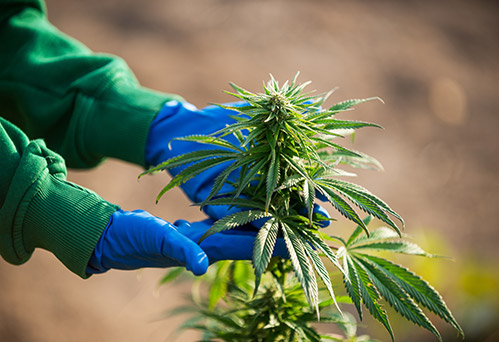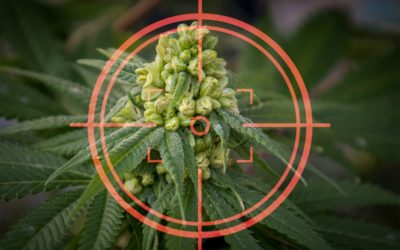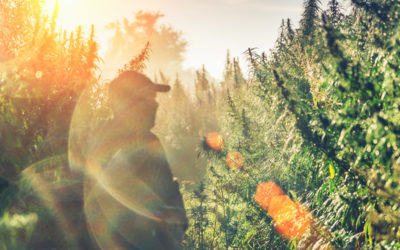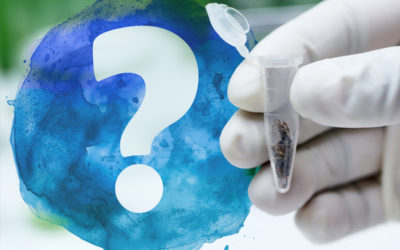Turning a profit for legal CBD hemp challenges farmers to break free of the market’s pervasive, stagnant structure. The traditional schedule of the cannabis plant is familiar to many of us, as well as the economics tied to its timeline:
1. Plant in spring.
2. Stack the growth throughout the summer.
3. Harvest the crop in the fall while fighting wet, cold conditions.
4. Sell at rock-bottom prices during the market flood to cover harvest and labor costs.
5. Retain what product you can — while incurring costs to store and maintain freshness — holding out for the market “drought” when summer hits so you can command top dollar for your product, now in high demand, even though it has lost much of its quality due to age.
6. Barely scrape together the resources to plant again next season.
7. Repeat the cycle.
Needless to say, this is no way to run farms in a highly competitive economic environment, and it takes more than just growing good hemp for businesses to shine. Engineering a comprehensive plan that efficiently utilizes a hemp farm’s footprint, infrastructure and resources to bring costs down while simultaneously capitalizing on market niches are necessary to survive the tumultuous beginnings of legal hemp.
Are hemp plants photodependent or non-photodependent?
The “full-season” model of growing hemp is based on Cannabis sativa L., which begins to flower based on how much light it receives on a daily basis. “Photoperiodism can … be defined as the developmental responses of plants to the relative lengths of light and dark periods. They are classified under three groups according to the photoperiods: short-day plants, long-day plants and day-neutral plants”.
Typically, full-term hemp are short-day plants triggered to flower based on the days getting shorter as summer ends and fall begins, often coinciding with miserable harvest conditions. However, lessons from the pages of cannabis history are being translated into something relatively new on the industrial hemp scene. “New tech” is making waves and changing the perception that growing cannabis means harvesting in the fall. Enter autoflower hemp.
Roots in Cannabis Ruderalis give rise to modern hemp strains
Autoflower hemp has in it the genetics of Cannabis ruderalis, “a cannabis plant that most-likely originates from eastern and central Europe where she grows in the wild in large quantities”. This species of cannabis does not need the amount of daily light to change for it to begin flowering. As a day-neutral plant, it reaches maturity based on age.

Today’s autoflower seeds contain genetic code linking them to the “ditchweed” of Europe and pre-prohibition North America. But cannabis ruderalis, in its original ditchweed state, lacked usable qualities of such treasured compounds as THC or high amounts of CBD desired by the hemp industry. To remedy this issue, some difficult breeding was undertaken. Because “autoflowering is a recessive trait, which means that both parents must contribute the gene in order for the offspring plant to autoflower” (1), it took skillful and time-consuming propagation to get high cannabinoid content while retaining the non-photodependent traits of ruderalis. “The Lowryder was introduced by The Joint Doctor at the beginning of this century and was a crossing between Cannabis ruderalis, a William’s Wonder and a Northern Lights #2. The Lowryder was the first commercial, fully autoflowering cannabis strain on the market and showed the cannabis scene the huge potential of autoflowering Cannabis ruderalis hybrid” (2).
Early commercial breeders of high-THC cannabis performed experiments hoping to find new avenues of covert production during 20th century cannabis prohibition. Autoflower varieties like The Lowryder helped tame the height and structure of more heirloom or sativa-dominant cannabis “strains” that were tough to manage in hidden indoor grows and required long flowering periods. These plants have a smaller, more manageable structure and reach seed-to-harvest maturity in three months or less, speeding up production.
In the same way The Joint Doctor experimented with interbreeding Cannabis ruderalis and high-THC varieties, forward-thinking hemp breeders have done the same with low-THC varieties of hemp.
Autoflower an ideal crop to stagger hemp harvests
Growing hemp on a commercial scale should spark interest in integrating autoflower strains into one’s production footprint. Varieties like Lightning Autoflower from Sovereign Fields can go from planting to harvest in 75 days, even if day 75 is in July. Options for supplementing hemp production with autoflower varieties are endless.
Depending on their climates, hemp farmers might start early in greenhouses, transplanting to fields with plans for summer harvest and another mid-to-late planting of full-season varieties once the autoflower is down. In Southern Oregon, full-term hemp plants have been put in the ground as late as the first week of August and harvested at the end of October when the weather holds.
Because capacities of hemp drying facilities often do not match field production, a popular planting technique is to plant both autoflower and photodependent varieties at the same time. Some people stagger rows, planting autos in every other row, while others plant sections based on projected harvest dates. This depends on where you grow, where each variety will go for harvest processing and how the hemp farm and drying facilities are structured for receiving the harvest.
Plan for a predictable, manageable hemp harvest
Perhaps the greatest thing about autoflower varieties is they have a predictable harvest window from the day of planting. Seeds such as Lightning Auto always are labeled with the number of days it takes for them to mature. Some varieties take even less than 70 days to mature! While there is no way that autos could develop into the monsters that we see in early-planted, full-season hemp plants, they have mitigating benefits.
Unless they are “cleaned up” multiple times, full-season hemp plants tend to have many lower bud sites that don’t see nearly the amount of light penetration as the top colas do. These “lowers” do not contain enough cannabinoids to make them worth the work. Processing small or underdeveloped buds starts to become cost intensive in the competitive post-harvest market.
Consider that in hot regions, a connected canopy shades roots from the harsh sun and allows for more vigorous growth. Staggered rows of autoflower that develop quickly may help shade the roots of neighboring full-term plants. But after the autos are harvested, full-term rows can continue spreading their canopies without blocking light previously needed by adjacent autoflower rows.
Smaller autoflower plants, on the other hand, get better light penetration to all the bud sites, which means more buds worth processing on every plant. Plus, new varieties are seeing better leaf-to-calyx ratios all the time.

Decrease hemp waste to increase bud yield
Harvest may require all of a worker’s physical strength to get hemp plants back to the truck because they weigh so much. But with autoflower, no matter when the hemp is harvested, plants are a manageable size for anyone on a harvest crew. This brings us to the next autoflower highlight.
While big hemp plants may technically produce a large amount of total biomass or cannabinoids per plant, it’s wise to consider what percentage of that will remain intact enough through harvest and post-production to become consumer-quality products. Cost-benefit analysis may not support trying to grow and harvest every last usable gram of flower from every big hemp plant that can be squeezed into the field.
Ryan Davidson of Sovereign Fields says that 20-30% or more of a harvest from full-term hemp plants is wasted because plants are grown beyond a reasonable size. Clothing scrapes against buds as harvest crews repeatedly brush by adjacent rows. The biggest, best colas often are dragged through dirt, mud, weeds and more being carried upside-down on the way in from the field. Underdeveloped hemp plants, or the lower halves of many plant carcasses that never received enough light to make their buds worth a second thought, are left to decay as winter conditions approach.
A savvy hemp farmer might look at all of this and see investment dollars rotting in the field — a total waste. Not prudent hemp farming. It seems more cost effective to use only the resources needed to plant and harvest what one can reasonably expect will ensure standards of quality. This is the kind of calculated, common sense farming it takes to compete in the current hemp market.
Why not use less growing resources throughout the season and less harvest resources at the end of the year if the waste is cut and the final season totals of sellable product are the same?
Experienced hemp farmers have spent years throwing money at “croptober” harvests due to poor planning and the high demand of resources during the fall rush, including labor, equipment and facility space. The advantages of autoflower hemp are obvious. An early, predictable and manageable bumper crop could find a large niche in the droughts of the seasonal market. Autoflower hemp seeds might just be the ticket to success in this next growing season.
Sources:





Looking for cbd auto flowers